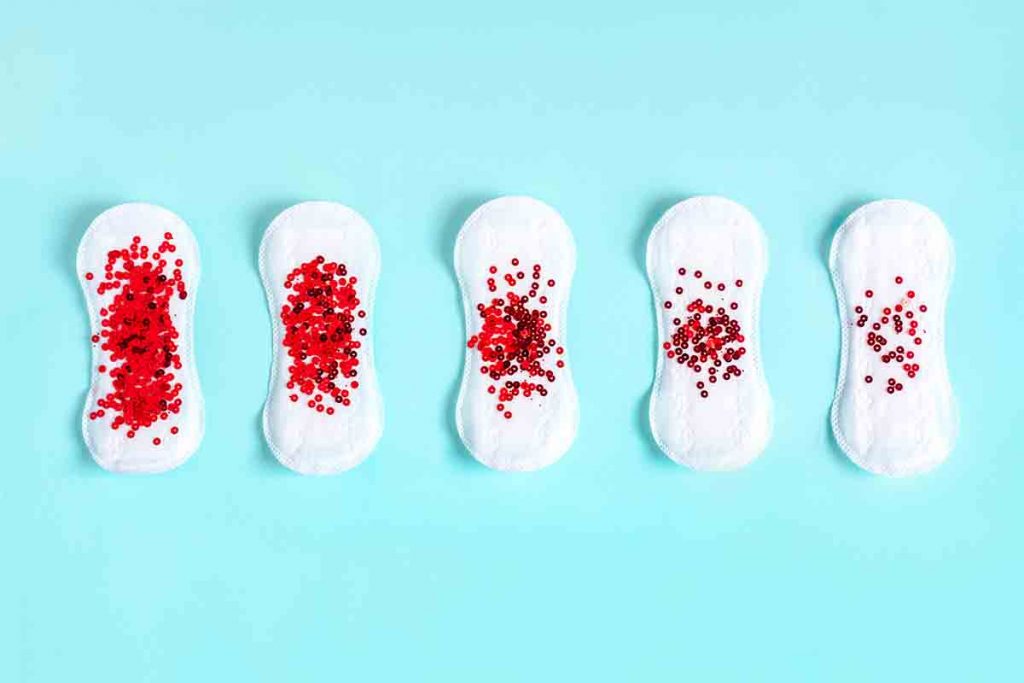Bleeding outside of your typical menstrual period might be concerning, regardless of whether you’ve been trying to conceive, trying not to conceive, or are going through menopause. It’s acceptable to be concerned about irregular bleeding, specifically if it’s coupled with additional symptoms or signals that you’ve previously had health issues.
In This Article:
- Ovulation: What Is It?
- What Leads to Bleeding During Ovulation, and Why?
- Does Bleeding During Ovulation Indicate Pregnancy?
- What Is The Duration Of Ovulation Bleeding?
- What Amount of Bleeding During Ovulation Is Typical?
- Does Ovulation Bleeding Happen Before or After You Ovulate?
- Can I Detect Ovulation Without Being Aware Of It?
- When Is Ovulation Bleeding A Cause For Concern?
- You Should Consult A Medical Professional If:
- How Can I Avoid Bleeding During Ovulation?
Ovulation: What Is It?
By the time a child is born, the majority of women’s ovaries will have produced all the eggs they will ever generate. After ovulation, an egg leaves the ovary and exits through the fallopian tube, where it has a chance to be fertilized if the right conditions are present. Multiple eggs may occasionally be released (thus explaining fraternal twins, the result of the fertilization and implantation of two separate eggs during the same cycle).
The duration of your cycle determines when you ovulate. For the majority of women, ovulation typically occurs once per month in the middle of the menstrual cycle. Ovulation, for instance, happens around 14 days after the beginning of your previous period and roughly 14 days before the first day of your next period in a 28-day cycle.
Based on the indications and symptoms they encounter throughout this time in their cycle, numerous women are able to predict when they ovulate. A rise in basal body temperature, a spike in luteinizing hormone (LH) levels, cervical mucus that resembles egg whites, a shift in the cervix’s posture, and a positive ovulation diagnostic (conducted by your physician or another healthcare professional) are typical indicators of ovulation.
Breast tenderness, ovulation discomfort (mittelschmerz), bloating, and heightened sexual urges are typical signs of ovulation. For some women, these sensations and signals are so predictive that they rely on them to anticipate ovulation and prevent conceiving by abstaining from sexual activity or utilizing a barrier method of birth control throughout their fertile days.
What Leads to Bleeding During Ovulation, and Why?
A small amount of bleeding or spotting that happens after ovulation in about 5% of menstruating women may be brought on by hormonal changes. Prior to ovulation, luteinizing hormone (LH) levels increase dramatically. Your body will eventually produce more estrogen as it gets ready for ovulation before abruptly releasing less estrogen once the egg has been delivered. Progesterone levels start to rise after ovulation. Minor spotting or light bleeding that is significantly less intense than typical menstrual bleeding frequently results from this hormonal change from elevated estrogen to elevated progesterone levels.
Does Bleeding During Ovulation Indicate Pregnancy?
It is false to assume that you are pregnant if you bleed in the middle of your cycle or during ovulation. Those who routinely bleed after they release an egg will frequently either seek to conceive or prevent conception according to their goals, as it may be a sign that you are in your fertile window. In addition, it may be a warning of something more severe if it is associated with indicators of an illness, including discomfort, odor, and unusual discharge.
What Is The Duration Of Ovulation Bleeding?
It’s brevity. Unlike a period, which may last up to a week, although 4-5 days is considered “average,” it lasts 12 to 72 hours at most.
Ovulation bleeding is considerably lighter and should only persist for a day or two, in contrast to your menstrual cycle, which is anticipated to be thicker, deeper in color, and longer lasting. Because ovulation bleeding will be lighter than period bleeding, you can differentiate between the two.
What Amount of Bleeding During Ovulation Is Typical?
You should not experience consistent blood flow during ovulation. Often, ovulation spotting is mild, with only one or two drops at a time. Ovarian hemorrhage shouldn’t necessitate the use of a tampon. It can be a trickle that necessitates using a menstrual product, or it might be so light that you only notice it when you wipe after using the restroom. Ovulation spotting is a light flow that requires the use of a sanitary pad, as was discovered by a research team looking at the menstrual cycle.
Does Ovulation Bleeding Happen Before or After You Ovulate?
It often happens right after ovulation. Bleeding results from a sudden drop in oestrogen levels following egg release, which is what releases the egg.
Along with bleeding or spotting, you can also have other ovulation-related symptoms (rising BBT, fertile cervical fluid) at this time.
Can I Detect Ovulation Without Being Aware Of It?
Yes, it can occasionally be virtually invisible. This was dubbed “occult ovulation bleeding” by scientists. In this context, “occult” does not signify witchcraft but rather anything that is invisible to the naked eye.
An ancient, but still often cited, publication in the medical reference book UptoDate claims that up to 90% of menstrual women may routinely have occult ovulation bleeding. In these situations, examining a vaginal swab in a lab is the only way to identify it.
When Is Ovulation Bleeding A Cause For Concern?
Every woman is different, but typically, normal menstrual bleeding starts every four weeks or so and lasts for five to seven days. Around the time of ovulation, about two weeks after the beginning of their most recent period, or in the middle of their cycle if their cycles are longer or shorter than 28 days, light spotting is another symptom that some women experience.
Periodic irregular bleeding, in addition to cycle spotting, can occasionally be a sign of a more serious medical condition. In addition to ovulation and implantation, fibroids, endometriosis, polycystic ovarian syndrome (PCOS), polyps, menopause or perimenopause, pregnancy, and sexually transmitted diseases are some of the most typical reasons for irregular bleeding (STIs).
You Should Consult A Medical Professional If:
Normally, you experience regular periods, but all of a sudden, you’ve noticed that your monthly bleeding rhythms have changed. You’ve experienced spotting or bleeding that didn’t happen around the middle of your cycle (around 14 days after the first day of your last period).
If you suffer significant pelvic discomfort or bleeding at any point throughout your cycle, along with the indications of an infection, while using hormonal birth control, you may also experience bleeding during ovulation (or any form of birth control)
Aside from performing a physical examination and medical evaluation, your doctor will also ask you questions to better understand your medical history, symptoms, and risk factors. If additional lab work or diagnostic imaging tests are necessary, they will also be prescribed.
How Can I Avoid Bleeding During Ovulation?
Ovulation bleeding rarely occurs in women. Blood loss can be reduced by suppressing ovulation in those who use hormonal contraceptives, which control hormone levels and prevent the release of the egg. Avoiding ovulation or any related spotting is not advised for women who are trying to get pregnant.
If you’re attempting to get pregnant, it might be advantageous.
An ovulatory state was not present in women who experienced mid-cycle bleeding, according to 2012 research that connected the condition to ovulation. If you’re trying to get pregnant, being anovulatory means you didn’t ovulate, which is something you want to avoid. (Even if you aren’t trying to get pregnant, ovulatory cycles are a crucial aspect of women’s health for those who aren’t using hormonal birth control.)
Sources:













